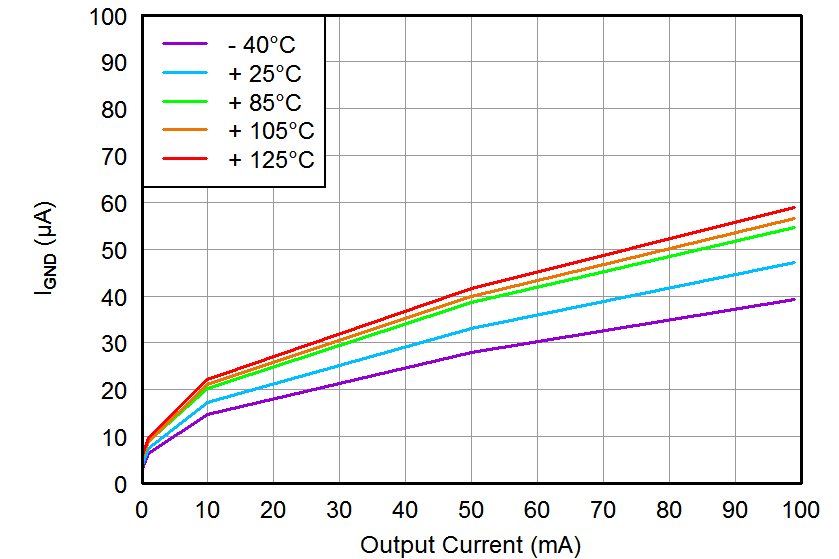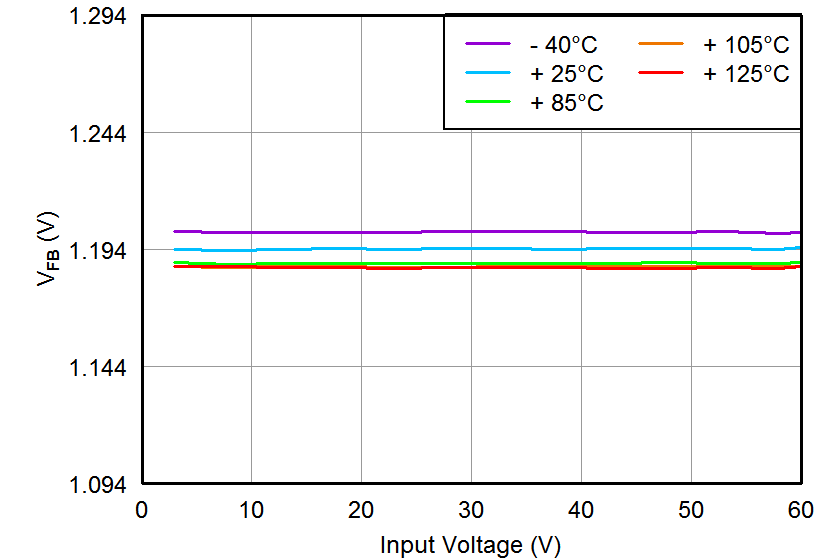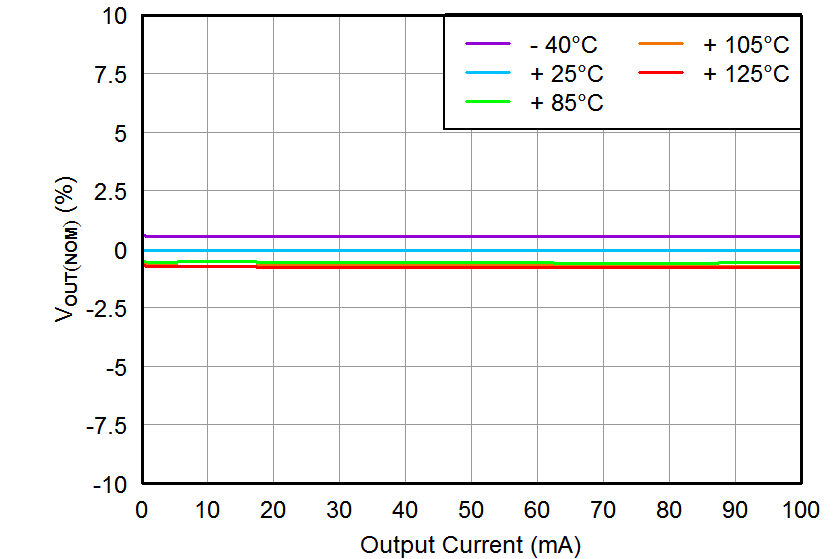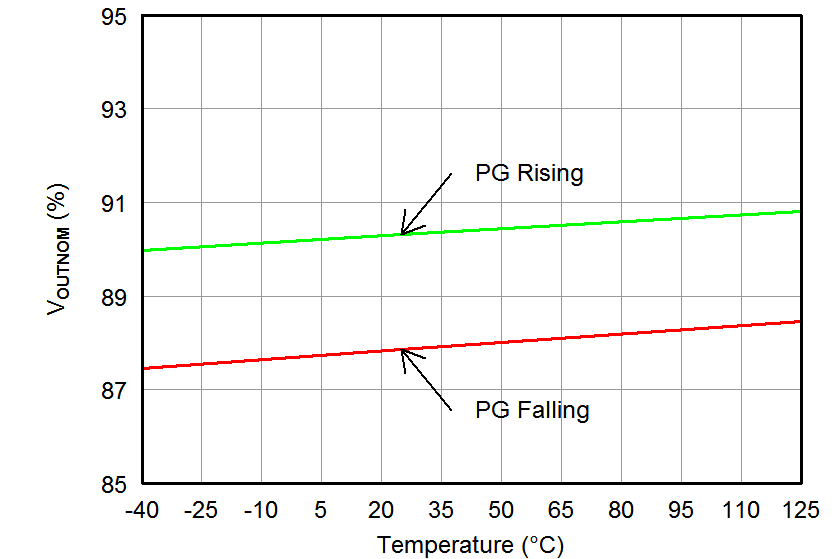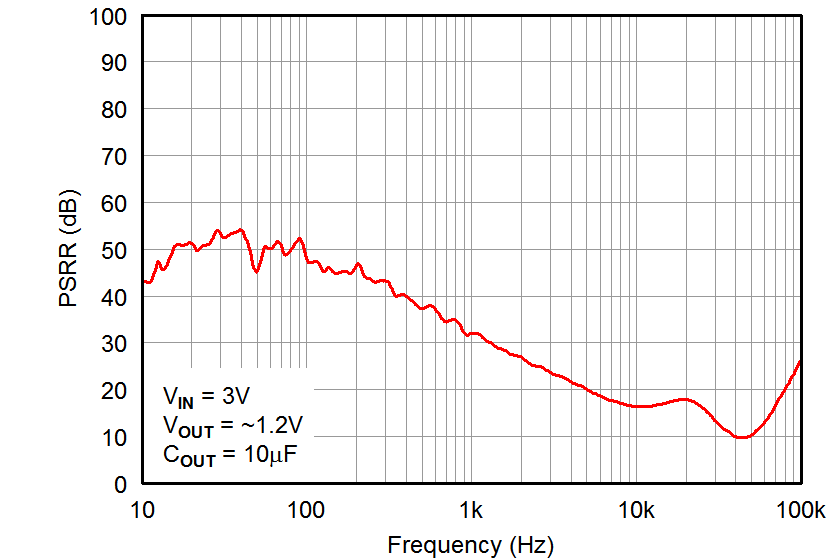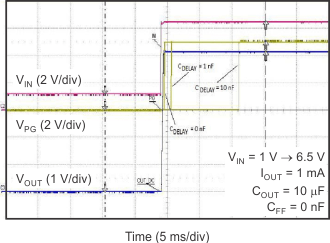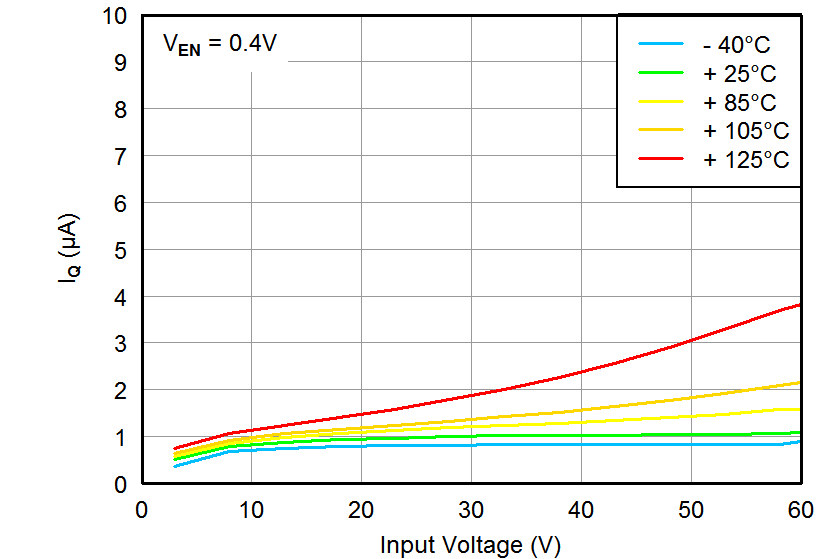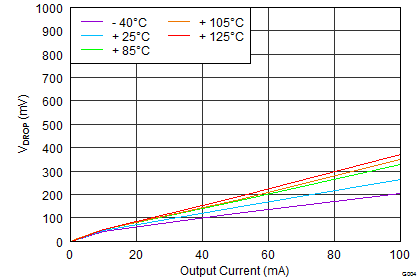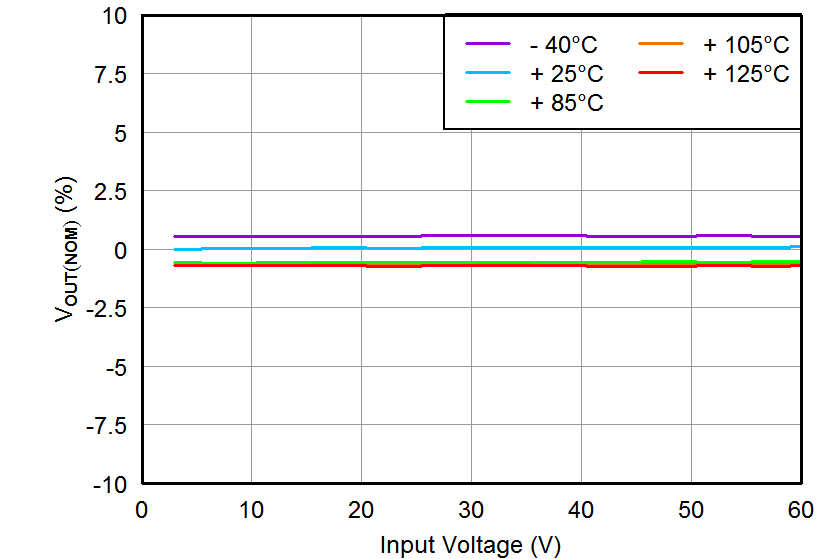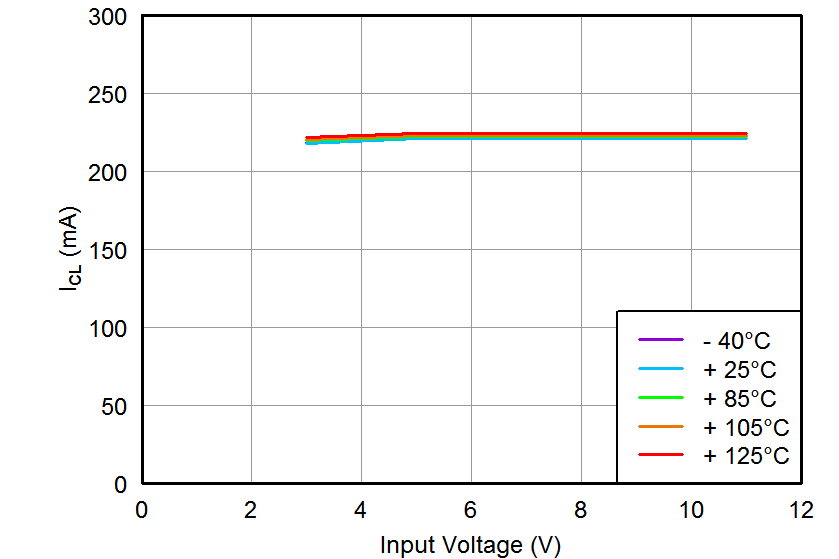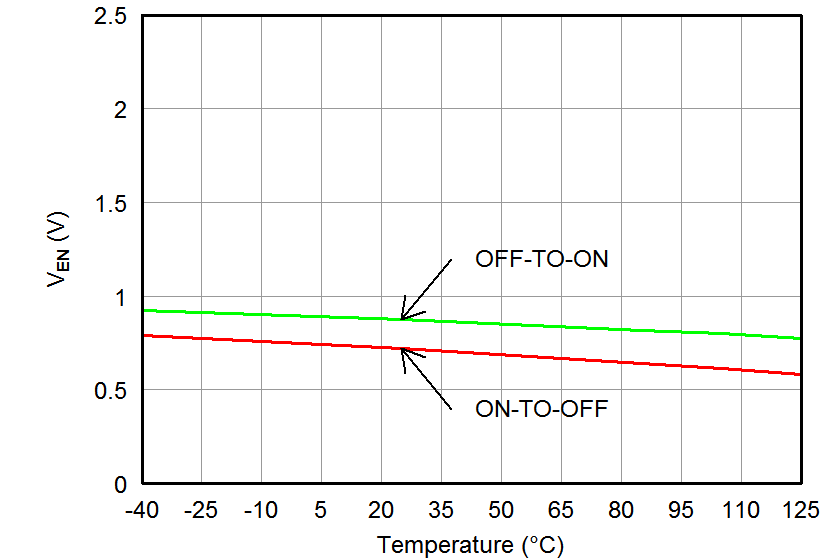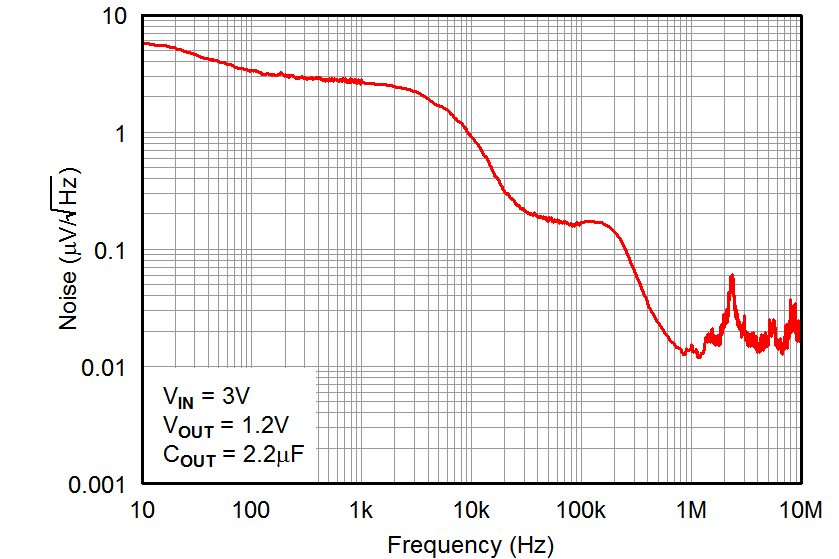-
TPS7A16 具有使能和电源正常指示功能的60V、5µA IQ、100mA、低压降稳压器
- 1 特性
- 2 应用
- 3 说明
- 4 修订历史记录
- 5 Pin Configuration and Functions
- 6 Specifications
- 7 Detailed Description
- 8 Application and Implementation
- 9 Power Supply Recommendations
- 10Layout
- 11器件和文档支持
- 12机械、封装和可订购信息
- 重要声明
封装选项
机械数据 (封装 | 引脚)
散热焊盘机械数据 (封装 | 引脚)
订购信息
DATA SHEET
TPS7A16 具有使能和电源正常指示功能的60V、5µA IQ、100mA、低压降稳压器
本资源的原文使用英文撰写。 为方便起见,TI 提供了译文;由于翻译过程中可能使用了自动化工具,TI 不保证译文的准确性。 为确认准确性,请务必访问 ti.com 参考最新的英文版本(控制文档)。
1 特性
2 应用
3 说明
TPS7A16 系列超低功耗、低降压 (LDO) 稳压器提供超低静态电流、高输入电压和小型化、高散热性能封装所具备的优势。
TPS7A16 系列器件针对连续或断续(备用电源)电池供电 应用 而设计,超低静态电流在此类应用中对于延长系统电池寿命至关重要。
TPS7A16 系列米6体育平台手机版_好二三四提供一个与标准互补金属氧化物半导体 (CMOS) 逻辑电路兼容的使能引脚 (EN) 和一个具有用户可编程延迟的集成开漏高电平有效的电源正常输出 (PG)。这些引脚专用于需要进行电源轨排序、 基于 微控制器的电池供电类应用。
此外,TPS7A16 器件非常适用于从多节电池解决方案生成低压电源(从多节电动工具组到汽车 应用);该器件不但能够提供一个稳压良好的电压轨,而且还能够承受瞬态电压并在电压瞬态期间保持稳压状态。这些 功能 意味着电涌保护电路更加简单且更为经济高效。
器件信息(1)
| 器件型号 | 封装 | 封装尺寸(标称值) |
|---|---|---|
| TPS7A16 | HVSSOP (8) | 3.00mm × 3.00mm |
| VSON (8) | 3.00mm × 3.00mm |
- 要了解所有可用封装,请参见数据表末尾的封装选项附录。
典型应用电路原理图
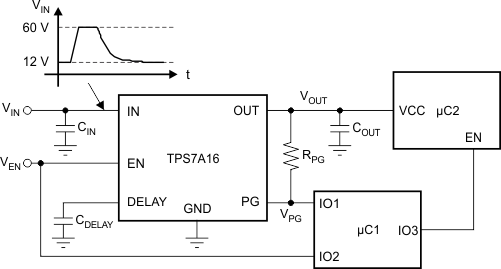
静态电流与输入电压间的关系
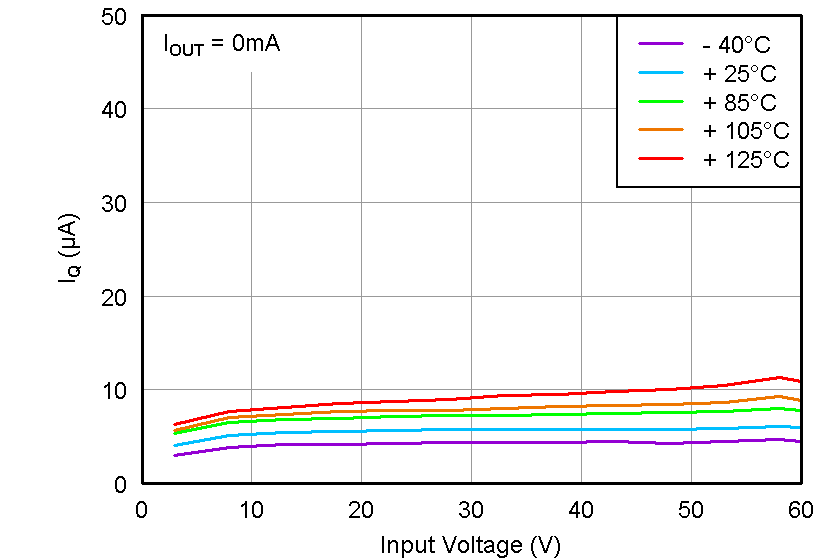
4 修订历史记录
Changes from E Revision (August 2015) to F Revision
- Changed ψJB value in Thermal Information table from 141.2 to 11.2 (typo) Go
Changes from D Revision (January 2014) to E Revision
- Added ESD 额定值表,特性 描述 部分,器件功能模式,应用和实施部分,电源相关建议部分,布局部分,器件和文档支持部分以及机械、封装和可订购信息部分Go
- Changed MIN value of Regulated output from 1.2 to 1.169 Go
- Changed MAX value of Regulated output from 18 to 18.5 Go
- Changed MAX value of Operating junction temperature from 150 to 125 Go
- Changed value in Power-Good section from 5.5-V to 5-VGo
Changes from C Revision (November 2013) to D Revision
- Changed Feedback Current min, typ, and max values from –1.0, 0.0, and 1.0 to –0.1, –0.01, and 0.1, respectivelyGo
- Changed Enable Current typ value from 0.01 to –0.01Go
Changes from B Revision (April 2013) to C Revision
- 已将 DRB 封装从米6体育平台手机版_好二三四预览改为生产数据Go
- Added DRB package to thermal informationGo
- Changed Figure 4 Y-axis unit from V to mV (typo)Go
Changes from A Revision (December 2011) to B Revision
- 已添加 DRB 封装的米6体育平台手机版_好二三四预览至数据表。Go
Changes from * Revision (December 2011) to A Revision
- 已将数据表由“米6体育平台手机版_好二三四预览”改为“量产数据”Go
5 Pin Configuration and Functions
DGN Package
8-Pin HVSSOP
Top View

DRB Package
8-Pin VSON
Top View

Pin Functions
| PIN | I/O | DESCRIPTION | |
|---|---|---|---|
| NAME | NO. | ||
| DELAY | 7 | O | Delay pin. Connect a capacitor to GND to adjust the PG delay time; leave open if the reset function is not needed. |
| EN | 5 | I | Enable pin. This pin turns the regulator on or off. If VEN ≥ VEN_HI, the regulator is enabled. If VEN ≤ VEN_LO, the regulator is disabled. If not used, the EN pin can be connected to IN. Make sure that VEN ≤ VIN at all times. |
| FB/DNC | 2 | I | For the adjustable version (TPS7A1601), the feedback pin is the input to the control-loop error amplifier. This pin is used to set the output voltage of the device when the regulator output voltage is set by external resistors. For the fixed voltage versions: Do not connect to this pin. Do not route this pin to any electrical net, not even GND or IN. |
| GND | 4 | GND | Ground pin. |
| IN | 8 | IN | Regulator input supply pin. A capacitor ≥ 0.1 µF must be tied from this pin to ground to assure stability. TI recommends connecting a 10-µF ceramic capacitor from IN to GND (as close to the device as possible) to reduce circuit sensitivity to printed-circuit-board (PCB) layout, especially when long input traces or high source impedances are encountered. |
| NC | 6 | — | This pin can be left open or tied to any voltage between GND and IN. |
| OUT | 1 | O | Regulator output pin. A capacitor ≥ 2.2 µF must be tied from this pin to ground to assure stability. TI recommends connecting a 10-µF ceramic capacitor from OUT to GND (as close to the device as possible) to maximize AC performance. |
| PG | 3 | O | Power-good pin. Open collector output; leave open or connect to GND if the power-good function is not needed. |
| PowerPAD | — | — | Solder to printed-circuit-board (PCB) to enhance thermal performance. Although it can be left floating, TI highly recommends connecting the PowerPAD to the GND plane. |
6 Specifications
6.1 Absolute Maximum Ratings
Over operating free-air temperature range –40°C ≤ TJ ≤ 125°C (unless otherwise noted).(1)| MIN | MAX | UNIT | ||
|---|---|---|---|---|
| Voltage | IN pin to GND pin | –0.3 | 62 | V |
| OUT pin to GND pin | –0.3 | 20 | ||
| OUT pin to IN pin | –62 | 0.3 | ||
| FB pin to GND pin | –0.3 | 3 | ||
| FB pin to IN pin | –62 | 0.3 | ||
| EN pin to IN pin | –62 | 0.3 | ||
| EN pin to GND pin | –0.3 | 62 | ||
| PG pin to GND pin | –0.3 | 5.5 | ||
| DELAY pin to GND pin | –0.3 | 5.5 | ||
| Current | Peak output | Internally limited | ||
| Temperature | Operating virtual junction, TJ | –40 | 150 | °C |
| Storage, Tstg | –65 | 150 | ||
(1) Stresses beyond those listed under Absolute Maximum Ratings may cause permanent damage to the device. These are stress ratings only, which do not imply functional operation of the device at these or any other conditions beyond those indicated under Recommended Operating Conditions. Exposure to absolute-maximum-rated conditions for extended periods may affect device reliability.
6.2 ESD Ratings
| VALUE | UNIT | |||
|---|---|---|---|---|
| V(ESD) | Electrostatic discharge | Human body model (HBM), per ANSI/ESDA/JEDEC JS-001, all pins(1) | ±2000 | V |
| Charged device model (CDM), per JEDEC specification JESD22-C101, all pins(2) | ±500 | |||
(1) JEDEC document JEP155 states that 500-V HBM allows safe manufacturing with a standard ESD control process.
(2) JEDEC document JEP157 states that 250-V CDM allows safe manufacturing with a standard ESD control process.
6.3 Recommended Operating Conditions
over operating free-air temperature range (unless otherwise noted)| MIN | NOM | MAX | UNIT | ||
|---|---|---|---|---|---|
| VIN | Unregulated input | 3 | 60 | V | |
| VOUT | Regulated output | 1.169 | 18.5 | V | |
| EN | 0 | 40 | V | ||
| DELAY | 0 | 5 | V | ||
| PG | 0 | 5 | V | ||
| TJ | Operating junction temperature range | –40 | 125 | °C | |
6.4 Thermal Information
| THERMAL METRIC(1) | TPS7A1601 | UNIT | ||
|---|---|---|---|---|
| DGN (HVSSOP) | DRB (VSON) | |||
| 8 PINS | 8 PINS | |||
| RθJA | Junction-to-ambient thermal resistance | 66.2 | 44.5 | °C/W |
| RθJC(top) | Junction-to-case(top) thermal resistance | 45.9 | 49.5 | °C/W |
| RθJB | Junction-to-board thermal resistance | 34.6 | 11.3 | °C/W |
| ψJT | Junction-to-top characterization parameter | 1.9 | 0.7 | °C/W |
| ψJB | Junction-to-board characterization parameter | 34.3 | 11.2 | °C/W |
| RθJC(bot) | Junction-to-case(bottom) thermal resistance | 14.9 | 4.7 | °C/W |
(1) For more information about traditional and new thermal metrics, see the Semiconductor and IC Package Thermal Metrics application report, SPRA953.
6.5 Electrical Characteristics
At TJ = –40°C to 125°C, VIN = VOUT(NOM) + 0.5 V or VIN = 3 V (whichever is greater), VEN = VIN, IOUT = 10 µA, CIN = 1 μF, COUT = 2.2 μF, and FB tied to OUT, unless otherwise noted.| PARAMETER | TEST CONDITIONS | MIN | TYP | MAX | UNIT | |||
|---|---|---|---|---|---|---|---|---|
| VIN | Input voltage range | 3 | 60 | V | ||||
| VREF | Internal reference | TJ = 25°C, VFB = VREF, VIN = 3 V, IOUT = 10 μA | 1.169 | 1.193 | 1.217 | V | ||
| VUVLO | Undervoltage lockout threshold | 2.7 | V | |||||
| VOUT | Output voltage range | VIN ≥ VOUT(NOM) + 0.5 V | VREF | 18.5 | V | |||
| Nominal accuracy | TJ = 25°C, VIN = 3 V, IOUT = 10 μA | –2% | 2% | VOUT | ||||
| Overall accuracy | VOUT(NOM) + 0.5 V ≤ VIN ≤ 60 V(1)
10 µA ≤ IOUT ≤ 100 mA |
–2% | 2% | VOUT | ||||
| ΔVO(ΔVI) | Line regulation | 3 V ≤ VIN ≤ 60 V | ±1% | VOUT | ||||
| ΔVO(ΔIO) | Load regulation | 10 µA ≤ IOUT ≤ 100 mA | ±1% | VOUT | ||||
| VDO | Dropout voltage | VIN = 4.5 V, VOUT(NOM) = 5 V, IOUT = 20 mA | 60 | mV | ||||
| VIN = 4.5 V, VOUT(NOM) = 5 V, IOUT = 100 mA | 265 | 500 | mV | |||||
| ILIM | Current limit | VOUT = 90% VOUT(NOM), VIN = 3 V | 101 | 225 | 400 | mA | ||
| IGND | Ground current | 3 V ≤ VIN ≤ 60 V, IOUT = 10 µA | 5 | 15 | μA | |||
| IOUT = 100 mA | 5 | μA | ||||||
| ISHDN | Shutdown supply current | VEN = 0.4 V | 0.59 | 5 | μA | |||
| I FB | Feedback current(2) | –0.1 | –0.01 | 0.1 | µA | |||
| IEN | Enable current | 3 V ≤ VIN ≤ 12 V, VIN = VEN | –1 | –0.01 | 1 | μA | ||
| VEN_HI | Enable high-level voltage | 1.2 | V | |||||
| VEN_LO | Enable low- level voltage | 0.3 | V | |||||
| VIT | PG trip threshold | OUT pin floating, VFB increasing, VIN ≥ VIN_MIN | 85% | 95% | VOUT | |||
| OUT pin floating, VFB decreasing, VIN ≥ VIN_MIN | 83% | 93% | VOUT | |||||
| VHYS | PG trip hysteresis | 2.3% | 4% | VOUT | ||||
| VPG, LO | PG output low voltage | OUT pin floating, VFB = 80% VREF, IPG= 1mA | 0.4 | V | ||||
| IPG, LKG | PG leakage current | VPG= VOUT(NOM) | –1 | 1 | μA | |||
| IDELAY | DELAY pin current | 1 | 2 | μA | ||||
| PSRR | Power-supply rejection ratio | VIN = 3 V, VOUT(NOM) = VREF, COUT = 10 μF, f = 100 Hz |
50 | dB | ||||
| TSD | Thermal shutdown temperature | Shutdown, temperature increasing | 170 | °C | ||||
| Reset, temperature decreasing | 150 | °C | ||||||
| TJ | Operating junction temperature range | –40 | 125 | °C | ||||
(1) Maximum input voltage is limited to 24 V because of the package power dissipation limitations at full load (P ≈ (VIN – VOUT) × IOUT =
(24 V – VREF) × 50 mA ≈ 1.14 W). The device is capable of sourcing a maximum current of 50 mA at higher input voltages as long as the power dissipated is within the thermal limits of the package plus any external heatsinking.
(24 V – VREF) × 50 mA ≈ 1.14 W). The device is capable of sourcing a maximum current of 50 mA at higher input voltages as long as the power dissipated is within the thermal limits of the package plus any external heatsinking.
(2) IFB > 0 flows out of the device.
6.6 Typical Characteristics
At TJ = –40°C to 125°C, VIN = VOUT(NOM) + 0.5 V or VIN = 3 V (whichever is greater), VEN = VIN, IOUT = 10 µA, CIN = 1 μF, COUT = 2.2 μF, and FB tied to OUT, unless otherwise noted.
